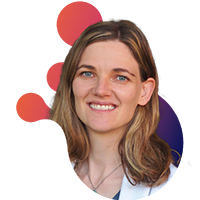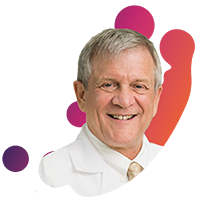Symposia
See talks from scientific leaders driving discovery and innovation through biochemistry and molecular biology.
- Advances in biological imaging across multiple scales
- Chemical biology for the greater good
- Enzymology today and tomorrow
- Lipids in health and disease
- Peptide and RNA medicines
- Quantitative metabolism in health and disease
- Nucleic acid transactions
- ASBMB Journals
- Education and professional development
- Maximizing access
Deep dive Racing the clock: Molecular mechanisms of aging


Organizers
Rozalyn Anderson, University of Wisconsin–Madison
Daniel Jarosz, Stanford University
Plenary speaker
Meng Wang, Baylor College of Medicine/HHMI
This theme focuses on biochemical aspects of aging both in model organisms and humans. Topics include changes in metabolism, effects of diet, genomic changes, and changes in the transcriptome and proteome.
Deep dive I, biochemist: Automation & AI in the lab


Organizers
Polly Fordyce, Stanford University
Hua Su, Merck & Co.
Plenary speaker
Tanja Kortemme, University of California, San Francisco
This theme focuses on how new computational and robotic technologies can help drive biochemistry in unexpected directions. Topics include the use of AI and machine learning, obtaining and analyzing large data sets, and use of automation and robotics in a high-throughput laboratory.
Deep dive Is anyone there? Information transfer in biology from proteins to organisms


Organizers
Philip Cole, Brigham and Women’s Hospital/Harvard Medical School
Graham T. Johnson, Allen Institute for Cell Science
Plenary speaker
Eric Betzig, University of California, Berkeley
This theme focuses on how life has evolved to sense chemical or physical signals and change the responses of individual proteins or the behaviors of whole animals. Topics include protein allostery, communication across membranes, communication between organs or organelles, and quorum sensing/chemical communication between organisms.
Observing a lot by just watching: Advances in biological imaging across multiple scales



Organizers
Mario J. Borgnia, National Institute of Environmental Health Sciences
Rinku Jain, AbbVie Inc.
Kevin Welsher, Duke University
Historically, imaging has been a cornerstone of biomedical research, providing indispensable insights into the complexity of life — from intricate anatomical structures to dynamic biochemical processes. Imaging modalities span vast spatial and temporal scales, enabling scientists to observe real-time cellular dynamics, visualize subcellular structures and characterize molecular architecture with unprecedented clarity.
Recent advancements have significantly broadened the scope and capability of imaging technologies. Innovations in super-resolution microscopy have shattered traditional resolution barriers, making it possible to visualize biological processes at near-molecular detail within living cells. Developments in label-free optical imaging have further allowed for the observation of biological specimens without perturbation from external markers, preserving natural states and processes. Additionally, cryo-electron microscopy (Cryo-EM) has revolutionized structural biology, providing atomic-resolution images of biomolecules and complexes previously beyond the reach of conventional imaging methods. Single-molecule imaging techniques have also emerged as powerful tools, enabling the observation of individual molecular events and interactions, thus providing unprecedented insights into molecular dynamics and function.
This session will highlight these and other cutting-edge developments, showcasing how novel imaging technologies across different scales are transforming our approach to biological research. Emphasis will be placed on both methodological innovations and their powerful applications to fundamental questions in biology, demonstrating how advanced imaging continues to shape and enhance our understanding of life's complexities.
Chemical biology for the greater good



Organizers
Fred Vaillancourt, Remix Therapeutics Inc.
Keriann Backus, University of California, Los Angeles
Matthew Disney, University of Florida/Scripps Institute for Biomedical Research & Innovation
Chemical biology merges chemistry and biology to unravel fundamental biological mechanisms and deliver practical solutions, as illustrated by its diverse applications in various fields like drug discovery, biotechnology, bioenergy and agriculture.
These sessions will demonstrate how chemical biology can be at the inception of deciphering life’s molecular foundations to develop new tools that can facilitate the development of new drugs, generate novel energy sources and facilitate the food supply chain. Researchers from both academia and industry will describe how they enable these efforts using innovative chemical biology platforms to deliver real-world outcomes with chemical precision and biological depth.
Enzymology today and tomorrow



Organizers
J. Martin Bollinger Jr., Penn State University
Michelle Arkin, University of California, San Francisco
Jin Zhang, University of California, San Diego
Enzymes catalyze the chemical reactions that power and control cells. Their concentrations, cellular locations and activity states are often finely regulated by complex networks of inputs that can adjust flux through the biochemical pathways in which they operate. Regulation of enzyme production at the level of transcription is a well-studied paradigm. An integrative understanding of the regulation of enzyme activities by control of translation, localization, post-translational modification (including engagement in larger complexes) and degradation is still emerging, and new approaches are affording deep insight into how these inputs control function in living cells, as two of the symposia in this session will highlight. From a biomedical standpoint, this growing understanding has identified levers to exploit in novel disease therapies (e.g., induced protein degradation). From a biotechnological perspective, the seemingly limitless reservoir of natural enzyme catalysts afforded by nucleic acid sequence databases, and our growing ability to evolve them to our own purposes (biocatalysis) could transform synthetic chemistry and underpin new bioprocesses to valuable chemicals. Here, our ability to find novel enzyme activities, intuit potential new reaction types, identify suitable natural enzymes as starting points for biocatalysis campaigns, and predict the impacts of enzyme modifications must be improved to streamline and accelerate development of new processes, as highlighted by the third symposium in this session.
Symposium 1, entitled "Modulating enzymes in protein homeostasis," will showcase the exciting field of enzymology, examining the highly coordinated dance by which proteins are expressed, folded and degraded. Presentations will highlight how the structures and functions of enzymes that regulate protein degradation pathways have been elegantly elucidated and exploited for groundbreaking therapeutic approaches in recent years.
In symposium 2, entitled "Spatiotemporal regulation of enzymes," presentations will explore how exquisite regulation of the cellular machinery is achieved through a network of highly dynamic signaling enzymes that are both spatially and temporally controlled. A particular goal will be to showcase recent discoveries of spatiotemporal regulation of these signaling enzymes in health and disease.
Symposium 3, entitled "Discovering and exploiting new enzymes in biotechnology and biocatalysis," will highlight recent examples of the discovery of new, natural enzyme activities, the analysis of the chemical mechanisms by which such activities emerge and their integration into new synthetic and synthetic–biological processes. A particular focus will be on exciting new approaches that promise to enable faster discovery and evolution of new enzyme reactions.
Lipids in health and disease


Organizers
Harini Sampath, Rutgers University
Hongyuan (Rob) Yang, University of Texas Health Science Center at Houston
Lipids are essential biomolecules that play a key role in maintaining the structure and function of cells. Owing to their amphipathic nature, lipids are key components of membranes, regulating the movement of substances in and out of cells and organelles and maintaining their integrity. Lipids act as signaling molecules, participating in the production of hormones and second messengers that are crucial for cellular communication. Lipids also serve as a dense energy source, making them vital for sustained energy needs. Lipids, both those derived from dietary sources and those generated endogenously, are also remarkable in their diversity, a feature that is growing rapidly in appreciation enabled by new technologies for the detection and functional characterization of lipids. Given these central and unique features of lipids, they are crucial to both the maintenance of optimal health as well as in the development and management of various pathologies.
The lipids symposium at ASBMB 2026 will bring together leading scientists and researchers to explore the multifaceted roles of lipids in health and disease. This year's themes spotlight our growing understanding of the involvement of targeting lipid metabolism to slow metastatic disease, of lipids as key modulators of inflammatory pathologies, and novel advances in cholesterol and sphingolipid biology.
These sessions will explore novel roles of lipids in tumor growth, metastasis and the tumor microenvironment; delve into the intricate interplay between lipids and inflammatory/immune pathways, inflammation and immune function, highlighting how these molecules shape immune responses and contribute to chronic inflammatory diseases; and shine a spotlight on novel advances in cholesterol and sphingolipid biology, showcasing breakthroughs that deepen our understanding of their metabolism, signaling pathways and implications for health and disease. Attendees will gain fresh insights into these critical areas of lipid research, fostering collaborations to address some of the most pressing challenges in lipid research.
Peptide and RNA medicines



Organizers
Stefan Lutz, Codexis Inc.
Michelle L. Hastings, University of Michigan Medical School
Sujata Sharma, Johnson & Johnson
Purified biomolecules are no longer useful only in laboratories. Proteins and nucleic acids can now be used as drugs for improving human health or as essential tools in the production of high-value chemicals and pharmaceuticals. In this session, we will highlight cutting-edge approaches, such as AI and machine learning, for the design, production and applications of RNA and proteins for biotechnology and pharmaceuticals.
Quantitative metabolism in health and disease



Organizers
Charles Burant, University of Michigan
Gary J. Patti, Washington University in St. Louis
Tânia Reis, University of Colorado, Anschutz Medical Campus
Metabolism is at the basis of every biological process, yet we tend to think about metabolic processes as something that occurs in isolated cells when they are challenged with different media. In the past few decades we have learned a lot in the clinic and from in vitro experiments. With genetic makeup playing such a crucial role in the metabolic capacity of cells and organs during health and disease, the last two decades have been critical to our understanding of metabolism in the context of whole organisms. In this session we will highlight different aspects of how metabolism interfaces with molecular mechanisms to influence functions of different cells and organs in the context of an organism. We focus on quantitative approaches exploring the contributions of metabolic demands to health and disease.
Nucleic acid transactions



Organizers
Greg Lohman, New England Biolabs
Luisa Cochella, Johns Hopkins University School of Medicine
Mario Halic, St. Jude's Children’s Research Hospital
Nucleic acids are at the core of the classic “central dogma” of life’s flow of genetic information. This powerful, yet simple, framework set the bases to understand DNA replication, transcription and translation, but it could not forecast the vast complexities of the processes in which nucleic acids are involved during information flow, or the variability in these processes from organism to organism across the tree of life. Moreover, nucleic acids are involved in a wide range of biological functions beyond information flow. This session will explore the use of new methods and technologies in understanding the intricacies of replication, repair, transcription, splicing and translation. It will also showcase biological roles of nucleic acids beyond the central dogma, as well as modern applications of nucleic acids and the enzymes involved in nucleic acid in biotechnology and medicine.
Biochemical modifications in health and disease

Organizer
Alex Toker, Beth Israel Deaconess Medical Center
Biochemical modifications — from enzymatic alterations of proteins and nucleic acids to dynamic shifts in metabolites — play a pivotal role in regulating cellular function and organismal health. Disruption of these finely tuned processes contributes to a wide spectrum of diseases, including cancer, cardiovascular and metabolic disorders, and neurodegeneration. This session will explore the latest insights into how biochemical modifications shape physiology and pathology, highlighting innovative research and therapeutic opportunities at the interface of chemistry, biology and translational research.
- Robert Haltiwanger, University of Georgia
- Brian Strahl, University of North Carolina at Chapel Hill
- Paul Shapiro, University of Maryland School of Pharmacy
- Irina Bezsonova, UConn Health
Lipids in cell–cell communication and metabolism in health and disease


Organizers
Nada Abumrad, Washington University in St. Louis
Michele Alves–Bezerra, Institute of Research and Innovation in Biomedical Sciences of Cádiz
Lipids are dynamic mediators of communication within and between cells. This session will explore the multifaceted roles of lipids in coordinating metabolic networks, signaling pathways, and intercellular interactions that underpin health and drive disease. The symposium will highlight emerging mechanisms linking lipid metabolism to inflammation, immunity and metabolic disorders, offering new insights into how lipid signaling shapes physiological and pathological processes.
- Nada Abumrad, Washington University in St. Louis
- Michele Alves–Bezerra, Institute of Research and Innovation in Biomedical Sciences of Cádiz
- Clair Crewe, Washington University in St. Louis
- Wei Ying, University of California, San Diego
Single cell proteomics: from method development to biological and clinical insights

Organizers
Ileana Cristea, Princeton University
Single-cell proteomics is revolutionizing our understanding of biological complexity by enabling the direct measurement of proteins at the level of individual cells by capturing molecules in real time. Recent advances in mass spectrometry, microfluidics, sample preparation and computational analyses are rapidly expanding the field's sensitivity and throughput, opening new avenues in systems biology, immunology, cancer research, and beyond.
- Bogdan Budnik, Harvard University
- James Kostas, Princeton University
- Jennifer Van Eyk, Cedars-Sinai Medical Center
Innovative approaches to educating across the continuum of career stages



Organizers
Shyretha Brown, Building Bridges, Inc.
Basudeb Bhattacharyya, University of Wisconsin–La Crosse
Jenna Roecklein–Canfield, Simmons University
How do we prepare trainees for the STEM workforce of the future? And how do we continue to develop as professionals once established in independent positions? As the complexity of scientific challenges facing society grows, how does education and professional development of the workforce drive solutions? Join us for these symposia that explore how education at different stages along the career journey is evolving to meet the needs of individuals and broader society.
Broadening engagement in BMB



Organizers
Alberto Rascon, Arizona State University
Oluwarotimi (Timi) Folorunso, McLean Hospital/Harvard Medical School
Allison Augustus–Wallace, LSU Health Sciences Center New Orleans
Broadening engagement in BMB will feature speakers with innovative strategies to broaden engagement in BMB through inclusive teaching and mentoring practices, career training opportunities, and institutional policies and programs. Speakers will also share their experiences with challenges to work in the belonging and opportunity space. Sessions will highlight successful initiatives and programs that have improved access and support for broadening participation in BMB, fostering a stronger, more innovative scientific community.
